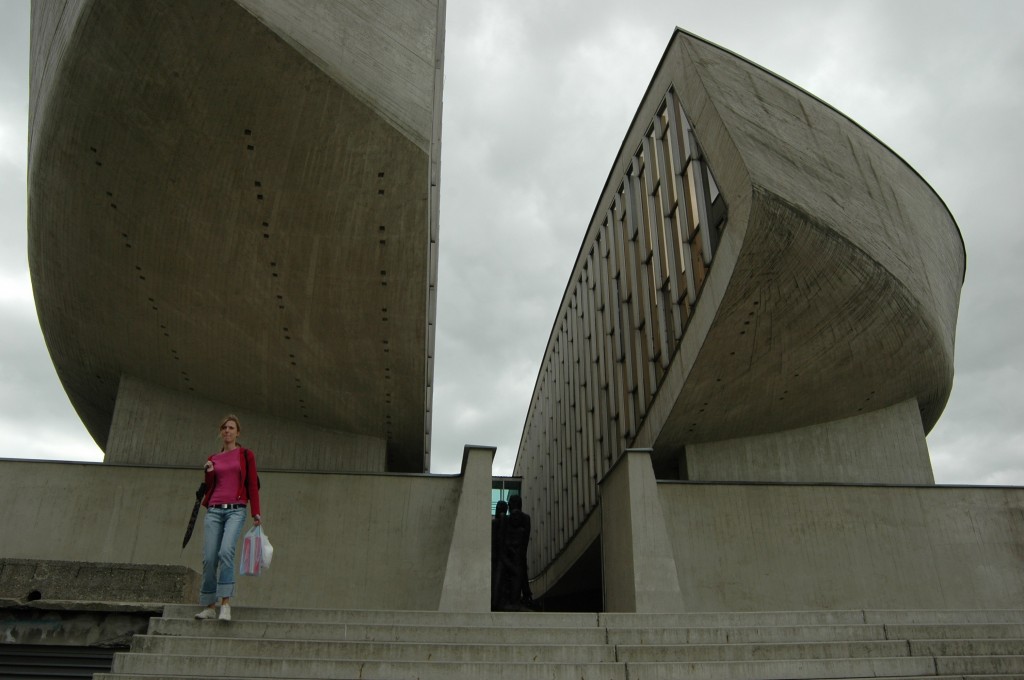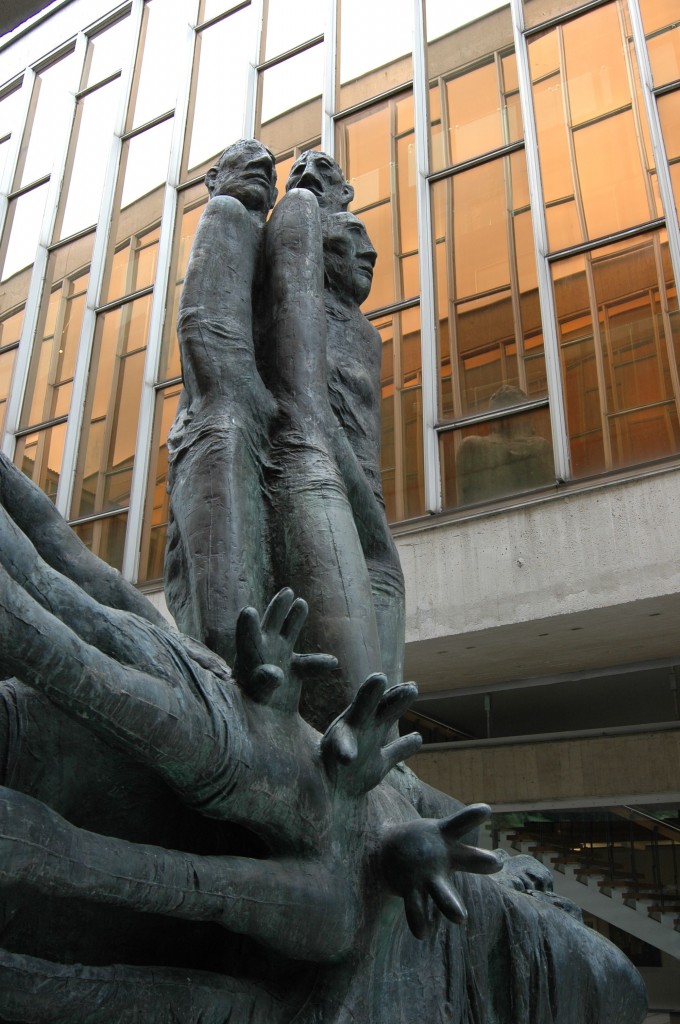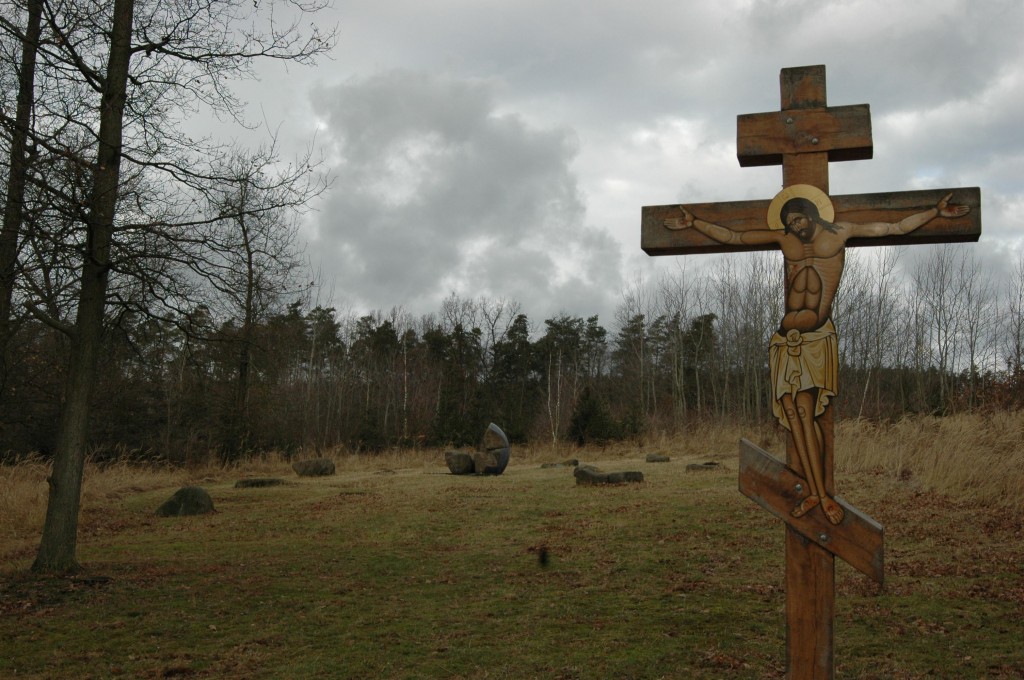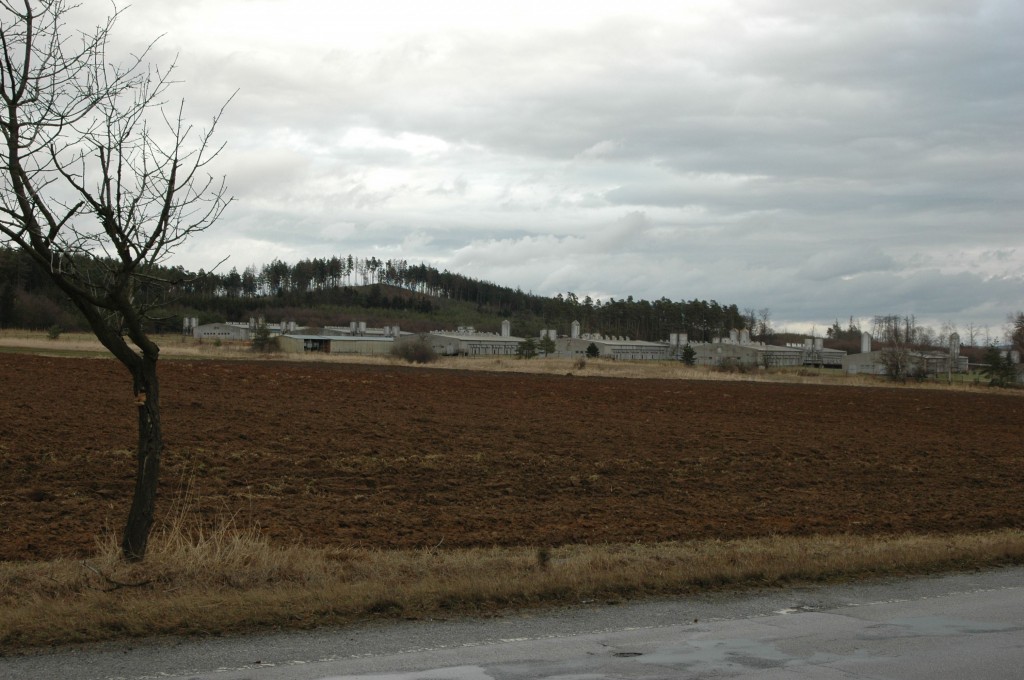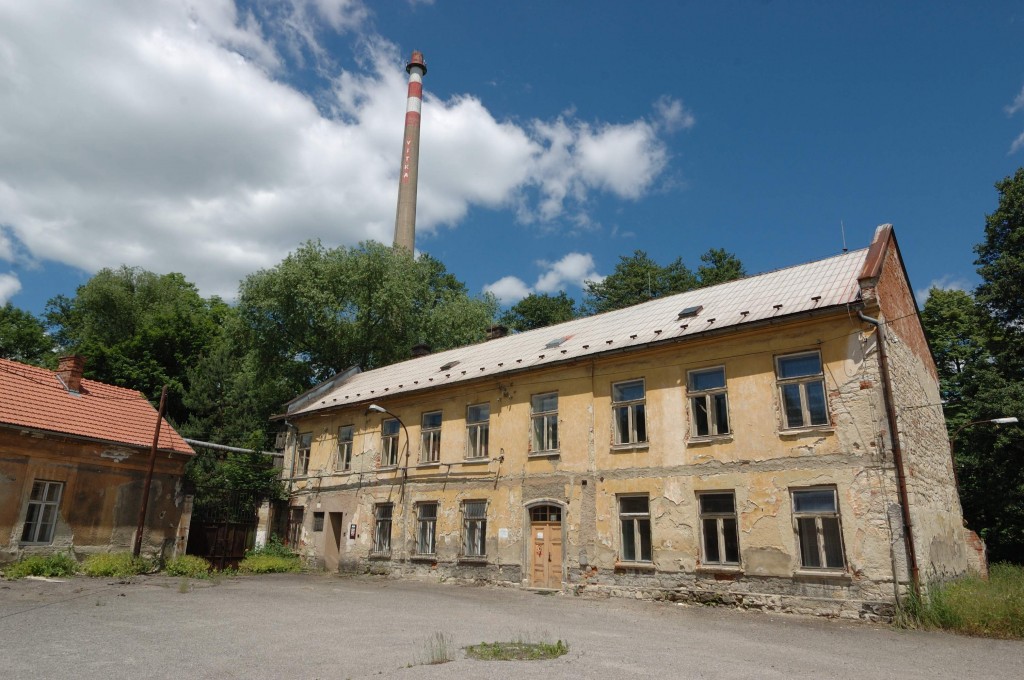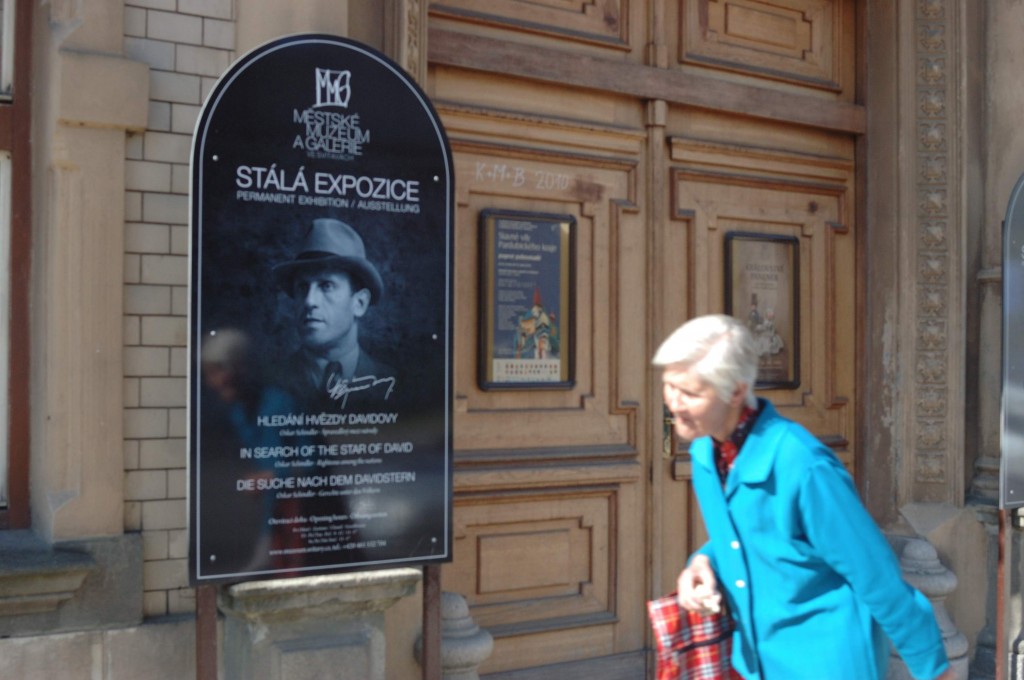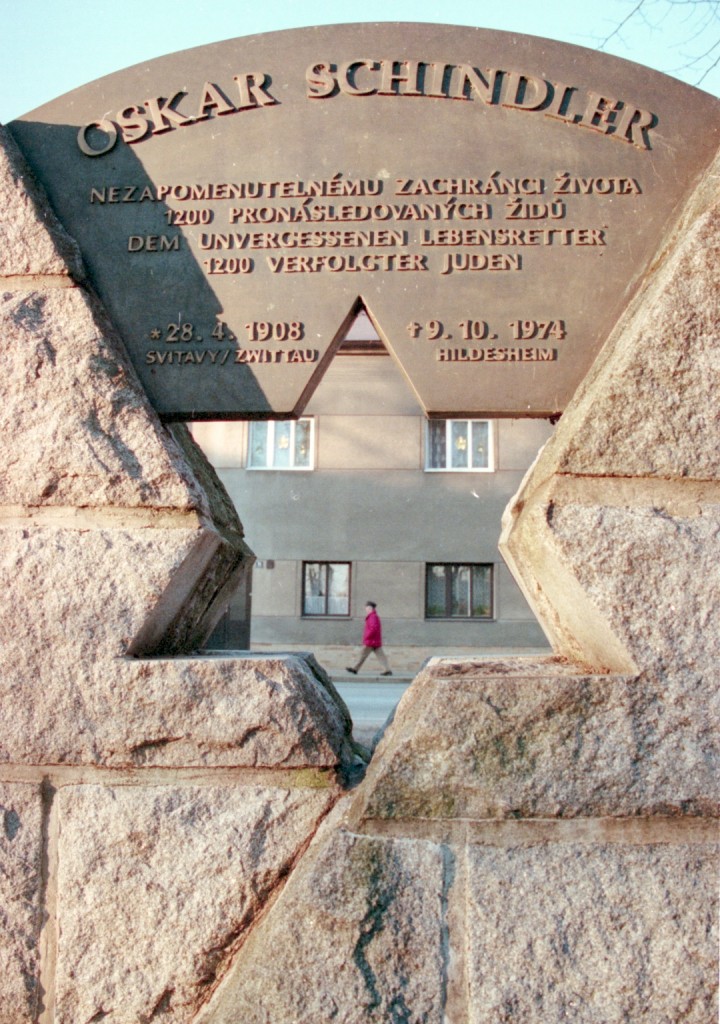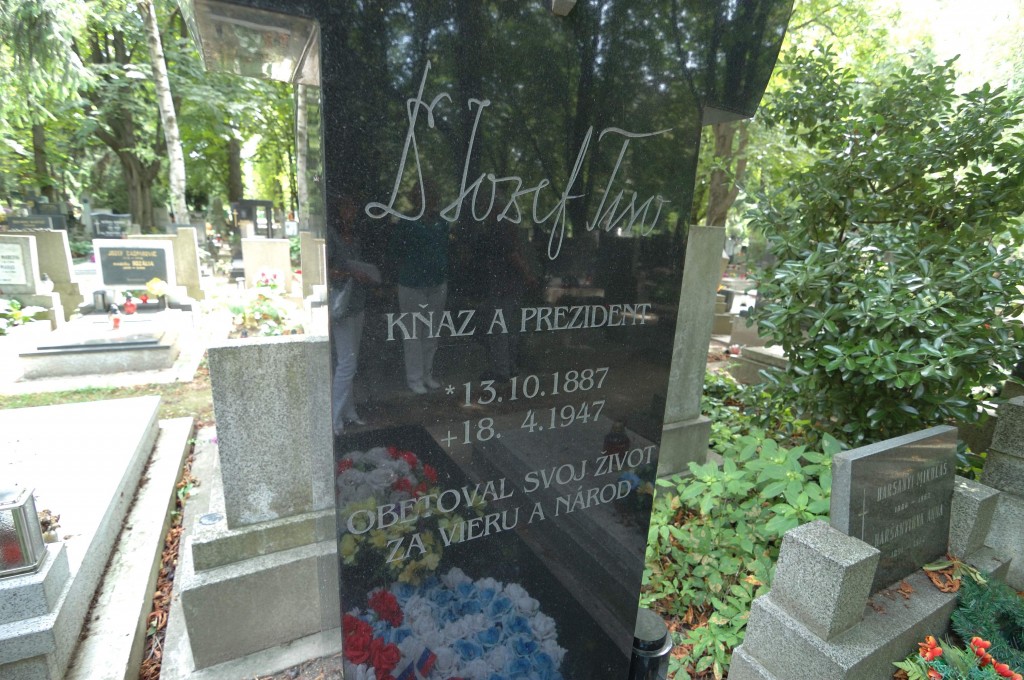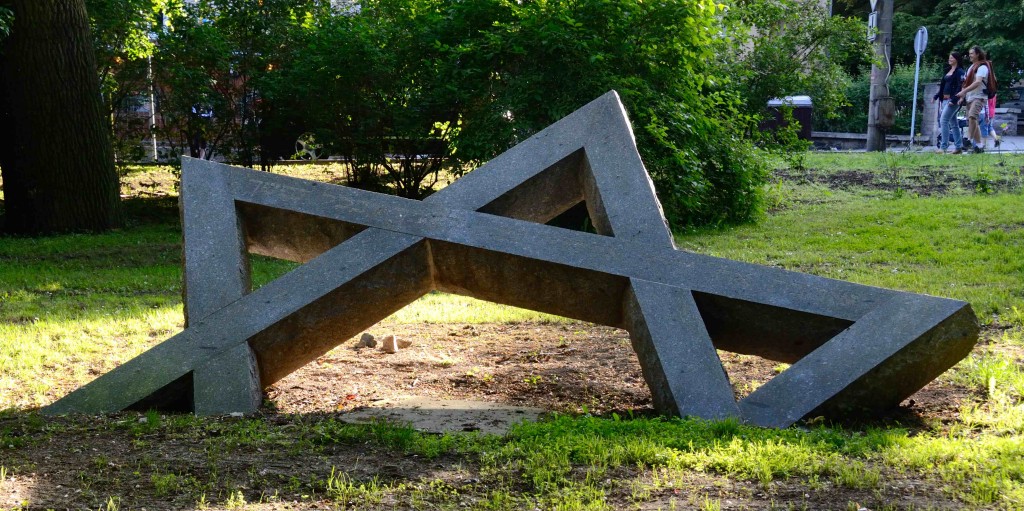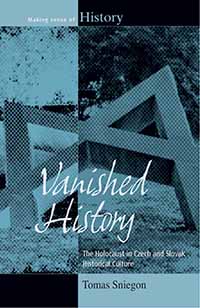
In an earlier post (which can be read here), author Tomas Sniegon shared the events that led him to study the Holocaust in a post-World War II context, a course of study which has led to a publication of Vanished History: The Holocaust in Czech and Slovak Historical Culture. Following is a selection of his photographs from his travels during his study to illuminate this hidden Holocaust history.
_____________________________________
The Museum of the Slovak National Uprising in Banska Bystrica, Slovakia, where the fist permanent exhibition about the Holocaust in Slovakia was opened during the 1990s.
__________________________
The statue “The Victims Warn.” The statue was removed during the late communist period in Czechoslovakia since it did not correspond with the aim to show communist heroism instead of suffering of victims during the WWII.
____________________________________
The top and bottom photos show the territory of the former camp, on which a still-existing pig farm causes the most problematic Czech debate about the Holocaust (in this case the Holocaust of the Roma, Porrajmos) today.
________________________________
The former concentration camp/factory of Oskar Schindler in Brnenec/Brünnlitz near Schindler’s hometown Svitavy/Zwittau.
________________________________
The suitcase of Zdena Fantlova, former Czech-Jewish prisoner. Exhibited in Auschwitz-Birkenau.
_____________________________
Schindler’s portrait invites visitors to a permanent exhibition about this man in his hometown Svitavy.
____________________________
The house where Oskar Schindler was born and a monument commemorating the place. The owner forbade a memorial plaque on the house in the early 1990s because of Schindler’s Nazi past.
__________________________
The graveyard in Terezin-Theresienstadt connects Jewish and Christian memory of the victims of WWII.
___________________________
The sign reading “Arbeit Macht Frei” reminds of the connection between the concentration camp on Theresienstadt and the extermination camp in Auschwitz-Birkenau where many of the former prisoners from Theresienstadt were murdered.
__________________________
The grave of Jozef Tiso in Bratislava. Despite the fact that Tiso was the Führer/dictator of Slovakia during the WWII, the gravestone still speaks of a man who sacrificed his life to Catholic faith and Slovak nation.
_____________________________
The memorial in Ústí and Labem is one of the most impressive memorials of the Nazi genocide on the Czech territory today.
_____________________________
Tomas Sniegon is a historian and Senior Lecturer in European Studies at the University of Lund, Sweden. His research focuses on Holocaust memory in various historical cultures and on the development of the Soviet forms of Communism in Europe during the Cold War.
Series: Volume 18, Making Sense of History

